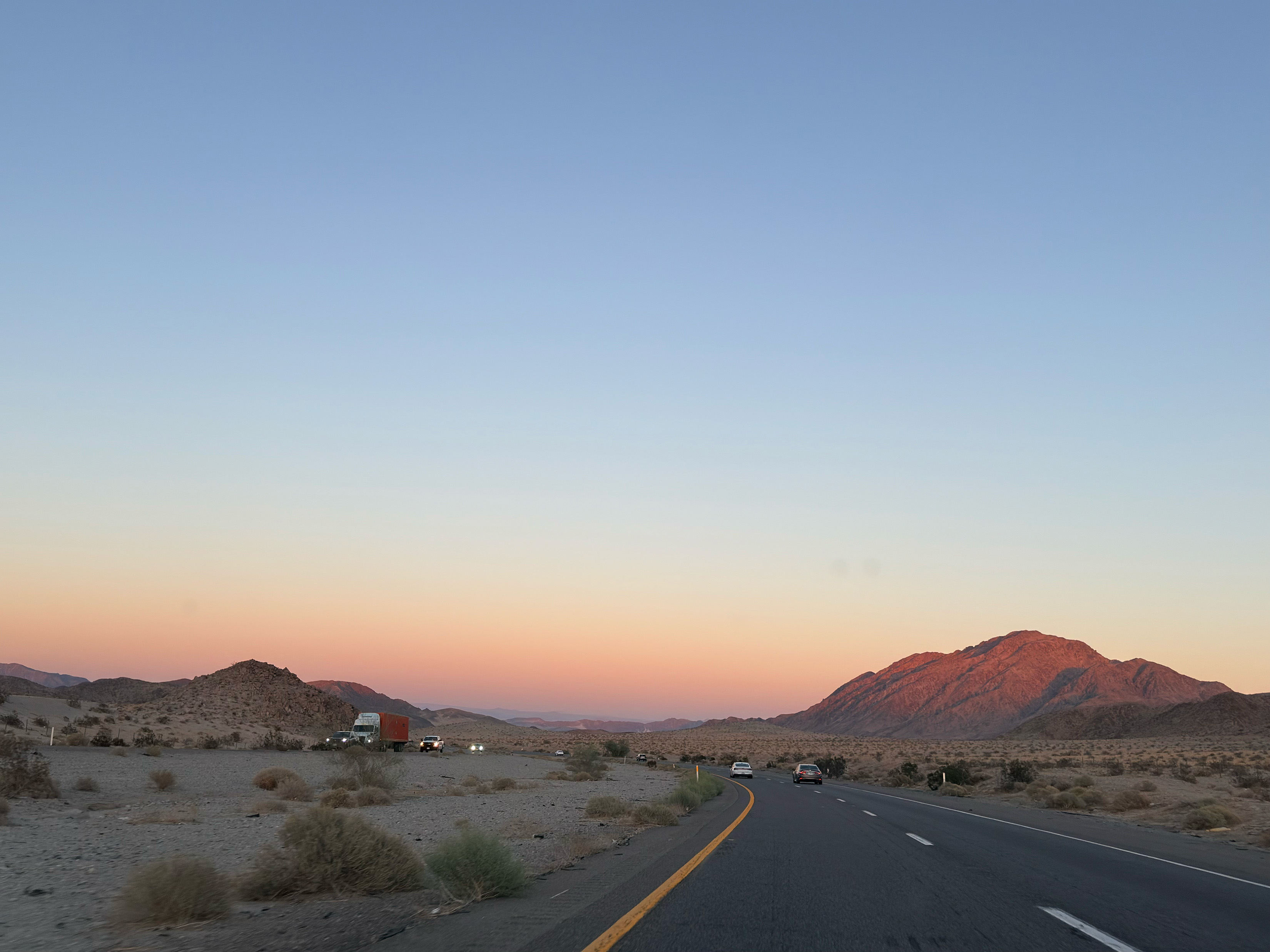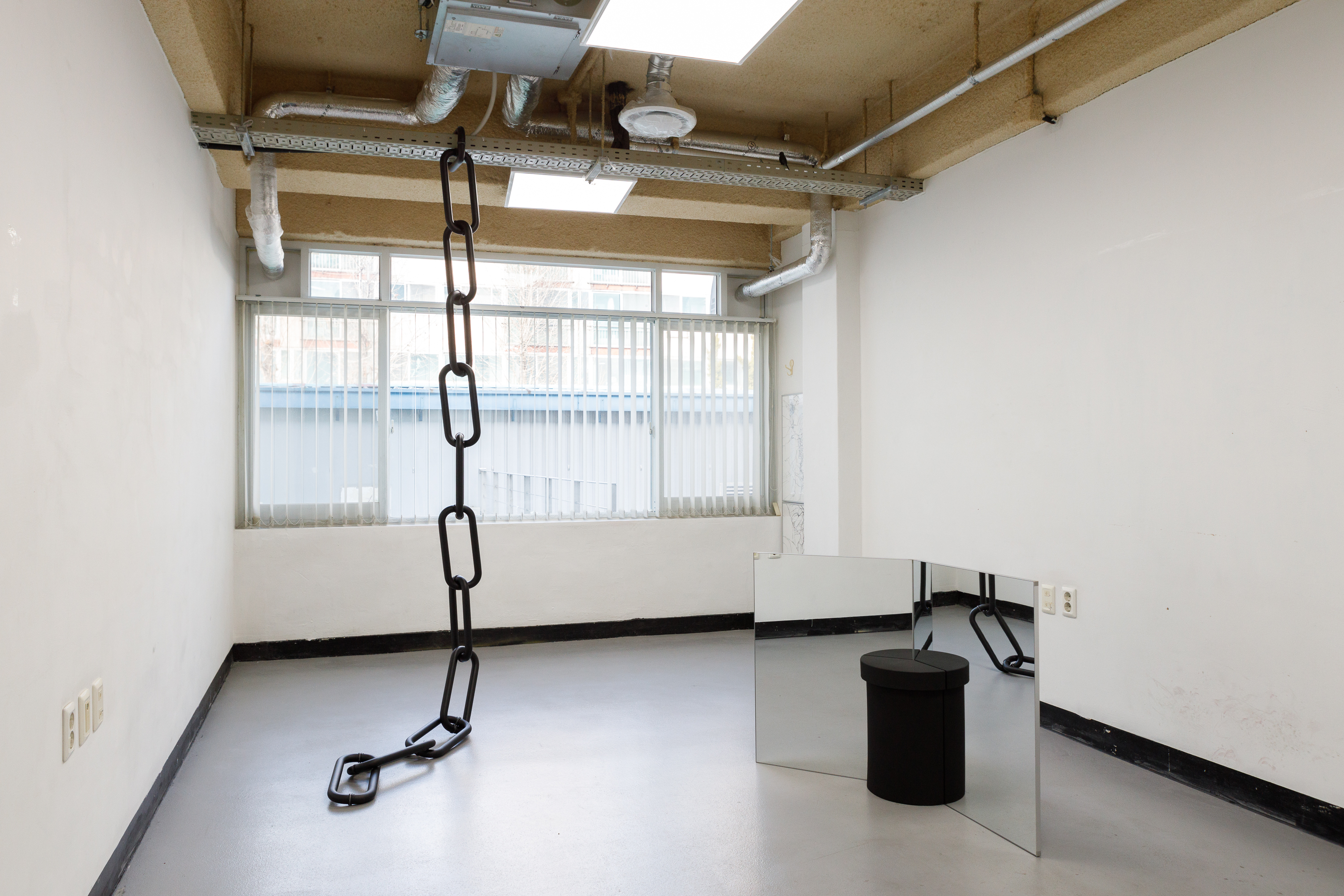
Here are three thoughts that came to me during the long drive:
1/ A friend once said they were moved by the scenes of living in a new place, while also sensing something missing inside. I think about this sometimes — maybe we notice and appreciate something in others because a similar part exists within us too.
2/ When I stand in front of nature and feel the shifts in the landscape, the moisture, and the light, something strange happens — as I observe everything outside, an inner space that mirrors nature opens up inside of me.
3/ There’s an idea in psychology: we often recognize qualities in others that we feel we don’t have. But the strange thing is — if there were nothing inside us that responds to it, how would we be able to recognize it at all?
Golden Shadow is like seeing my own shadow reflected on others. It appears in the brief moments of sunrise and sunset. I try to present the scenery along the road and the inner dialogue that emerges.
This series was developed during the residency at 18th Street Arts Center in Los Angeles.
1/ A friend once said they were moved by the scenes of living in a new place, while also sensing something missing inside. I think about this sometimes — maybe we notice and appreciate something in others because a similar part exists within us too.
2/ When I stand in front of nature and feel the shifts in the landscape, the moisture, and the light, something strange happens — as I observe everything outside, an inner space that mirrors nature opens up inside of me.
3/ There’s an idea in psychology: we often recognize qualities in others that we feel we don’t have. But the strange thing is — if there were nothing inside us that responds to it, how would we be able to recognize it at all?
Golden Shadow is like seeing my own shadow reflected on others. It appears in the brief moments of sunrise and sunset. I try to present the scenery along the road and the inner dialogue that emerges.
This series was developed during the residency at 18th Street Arts Center in Los Angeles.

Residency project: PULL, 2022, Installation view at Seoul Art Space Geumcheon, Seoul
During the residency in Seoul Art Space Geumcheon, the people I met shared their stories with me. I processed these narratives and reimagined different roles through objects.
They might come into existence for the purpose of ‘being something.’ Yet, as the usages of the objects changed, I started to notice that their original meanings might also have new opportunities to be experienced differently. With this in mind, I wish to write for the contradictions and gaps among these different meanings and to build a bridge for them to converse with each other in this collection.
The ordinary, to some, means the accustomed everyday life, but, to some, the unachievable goal despite all the efforts they have made. The latter, like migratory birds, are used to looking for the direction where they belong while flying.
They might come into existence for the purpose of ‘being something.’ Yet, as the usages of the objects changed, I started to notice that their original meanings might also have new opportunities to be experienced differently. With this in mind, I wish to write for the contradictions and gaps among these different meanings and to build a bridge for them to converse with each other in this collection.
The ordinary, to some, means the accustomed everyday life, but, to some, the unachievable goal despite all the efforts they have made. The latter, like migratory birds, are used to looking for the direction where they belong while flying.

Fever Screen, 2022, Installation view at Digital Art Center, Taipei
This series, Fever Screen, therefore draws from this otherwise undetectable interface with reality—that is, the thermal images—to establish an illuminating platform/screen/viewfinder to investigate the technological phenomenon of such an interface and the sensory experiences involved in the process of its translation into luminous energy.
In infrared images, objects and spaces are detached from their surroundings and translated into a light spectrum, similar to that used in the mapping of terrain. Through the dynamic transmission of heat data into light, the relationships between the public and the individual, and between interaction and quarantine, are unwrapped from beneath the object’s surface and its visual narrative, revealing the borders between the inner and outer body, the appearance and representation of an object, and the dimensions of spaces.
The light of nature allows the human eye to see the phenomena of our realities, whereas the light of technology visualizes what was once invisible. With this technological visual perspective, I attempts to draw another reality with alternative borders between things and shifts the cognitive paradigm and our ways of seeing by deducing our interaction with reality from that which is manifested in the interface.
In infrared images, objects and spaces are detached from their surroundings and translated into a light spectrum, similar to that used in the mapping of terrain. Through the dynamic transmission of heat data into light, the relationships between the public and the individual, and between interaction and quarantine, are unwrapped from beneath the object’s surface and its visual narrative, revealing the borders between the inner and outer body, the appearance and representation of an object, and the dimensions of spaces.
The light of nature allows the human eye to see the phenomena of our realities, whereas the light of technology visualizes what was once invisible. With this technological visual perspective, I attempts to draw another reality with alternative borders between things and shifts the cognitive paradigm and our ways of seeing by deducing our interaction with reality from that which is manifested in the interface.
Pixel and Star Cluster reconstructs the visuality involved with mechanical images via the concept of pixels. It is a site-specific series that I create by arranging fluorescent RGB color pixels, with numerous fluorescent light speckles shown together in the dark to form the self-illuminating screen image. The result is a “machine’s image” that wasn’t produced by an image-processing machine, so does it still considered as an image?
I attempted to present the production mechanisms behind the images by the power of human hands, creating an alternative reality to reinterpret and reassess their meaning when viewed.
I attempted to present the production mechanisms behind the images by the power of human hands, creating an alternative reality to reinterpret and reassess their meaning when viewed.